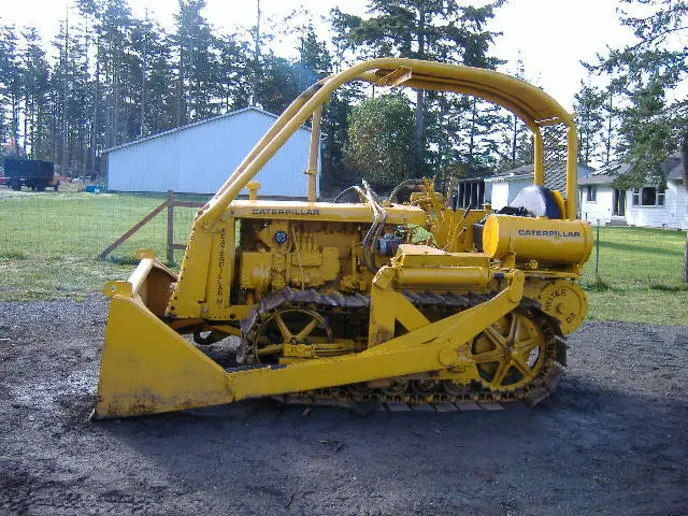I think that in the early days at least, seal technology and system pressure was limited, so it would be better to have the larger piston area applying the digging forces, dozers do most of their work with the edge in the ground not the air.
Yes, but once a cylinder system is able to lift the front of the track frame, any greater down pressure force is irrelevant.
Hey, it works pretty well the way they did it, I just wonder about the thought process, part of which you have presented.
Thanks

Yes, but once a cylinder system is able to lift the front of the track frame, any greater down pressure force is irrelevant.
Hey, it works pretty well the way they did it, I just wonder about the thought process, part of which you have presented.
Thanks
Using a d-2 or 4 for up routing trees with out a safey rops is a dangerous job .Its only going to take one hanging widow maker limb to come down on the operater to cause serious injury .Yrs ago I had a bad experience which I will never forget .Ihad a travel road threw the woods that at the time ,I used to track my 40A D-4 ,no canopy, throught the woods .One day I was going threw that woods ,and made a slight turning correction ,and the left side of the blade swung to the left and hit a tree on the side of the road ,and about 2 seconds later a 6 inch diamater about 10 ft long landed in my lap .The battery boxs on both sides saved me from the weight of the limb .My arms were pined though and could not throw the clutch out to stop the forward movement .I did manage to get my knee behind the clutch lever ,and throw it out . If that limb had landed 6" nearer me ,it would have hit me square in the head ,and I would not be writing this reply today !
Its the limb that you don't see is whats going to hurt or kill you .Its dangerous enough clearing with a tractor with a clearing rops because of spring back limbs that can make their way through the cab
Uh-huh. Have you been peeking at my D2?
If the cylinders are mounted in the opposite direction there is also more travel that the hoses need to have as the barrel of the cylinder moves with the blade. Probably easier to snag them with the bigger loop.
If the cylinders are mounted in the opposite direction there is also more travel that the hoses need to have as the barrel of the cylinder moves with the blade. Probably easier to snag them with the bigger loop.